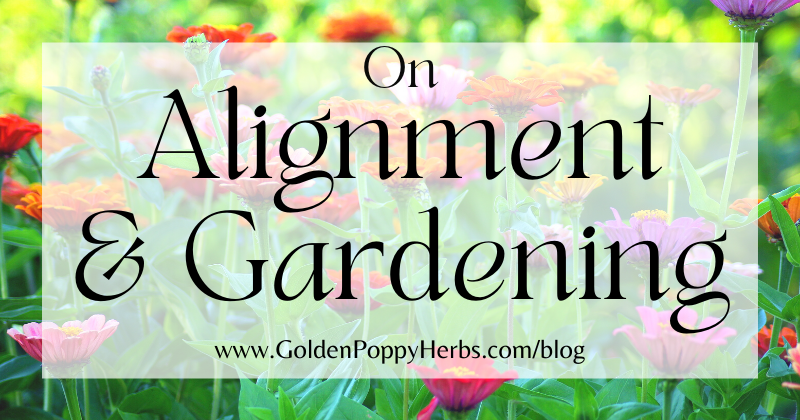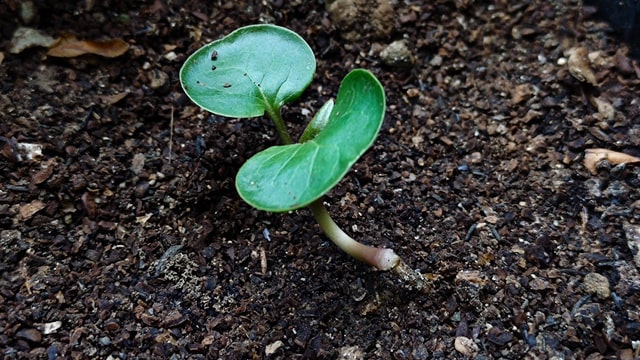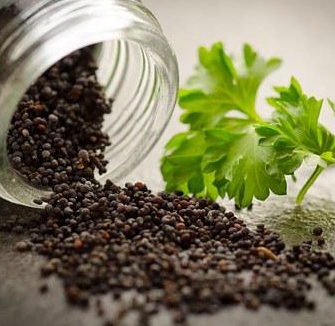
To tend to a garden is truly so much more than a fun hobby – it is a way to intentionally connect with plants and learn about them in their fullest form, and it is such a beautiful way to practice connection and love to the Earth.
A garden teaches us to slow down, and be present. We become attuned to the smallest details, and come to know the intricate inner workings of all who exist within and contribute to it. This is from the tiny mycelium networks beneath the soil (learn more about these in our February blog post) to the decomposers that break down our compost into soil, to larger elements like the sun and weather. The garden becomes a teacher, guiding us through Nature’s most fascinating wonders, and also helps us to understand ourselves on a deeper level (particularly how patient we are!).
Perhaps the most important thing a garden teaches us, as pointed out by the incredible author and ecologist behind the book Braiding Sweetgrass, Robin Wall Kimmerer, is that gardens teach us about the practice of reciprocity.
“How generously they shower us with food, literally giving themselves so that we can live. But in giving their lives are also ensured. Our taking returns benefit to them in the circle of life making life, the chain of reciprocity. Living by the precepts of the Honorable Harvest – to take only what is given, to use it well, to be grateful for the gift, and to reciprocate the gift.” – Robin Wall Kimmerer
The act of reciprocity involves giving as much or more than that which you take. In a garden, we give though tending: ensuring the plants have nourishment in their soil, removing weeds and pests, ensuring proper amounts of water. Perhaps you might even offer song or prayer to your seedlings as they begin to sprout, positively encouraging their growth. Reciprocity also always involves expressing gratitude for all that you are given. Nature thrives most abundantly when reciprocity is practiced.

Getting Started
Being successful with your garden starts with a bit of preparation. It is also really easy to get excited and want to plant literally everything (believe us, we get it!), but this can actually end up with you feeling overwhelmed. Before diving in, it can be helpful to ask yourself a few questions to be clear on what kind of garden you want and are able to tend to, such as:
- How much space do you have? If you are short on space, such as in an apartment, this does not mean you cannot have a beautiful garden, it simply means you may need to opt for a container garden. If you have a lot of space, you might want to consider multiple options – Do you want an in-ground garden where you can build up soil, or do raised beds make the most sense for you?
- What does your budget look like? Sometimes it makes sense to build upon your garden year after year, as gardening costs can add up quickly if you opt to do everything at once. Planning ahead can help you identify such things as where to build new beds each year, or how much you are wanting to spend on supplies.
- What do you want to grow? This is actually a very important question – especially when those deliciously tempting seed catalogs start showing up in the mail! Pre-planning what you want to grow can help minimize the chance of buying seeds or plant starts you don’t end up using. It can also help you to think about what kind of a garden you want to have – do you want to grow a food garden, a pollinator garden, or perhaps a medicinal cottage herb garden?
- Check out our Medicinal Herb Seeds for some inspiration. Each year we gather our favorite easy-to-grow medicinal herb seeds so you can pick your favorites and get growing.
Aligning with Nature
Tending to a garden also helps us to become better attuned to the natural world in which we live, for a garden is but an extension of Mother Earth! Building a stronger relationship with and understanding of the dynamics of your local area also help to ensure that your garden will be successful. For example, it is important to understand the climate where you live; here in Northern Colorado, where it tends to be very dry and hot for a good part of the growing season, it would be difficult to grow tropical plants that require a lot of humidity and moisture, or plants that prefer lower temperatures or even freezing to thrive, without a lot of extra infrastructure and support.

Additionally, we can align with nature by paying close attention to the cycles of the seasons and the Moon! Sometimes referred to as “biodynamic gardening,” the term for this type of gardening (gardening that integrates scientific understanding with a recognition of spirit in nature) is often credited to Austro-Hungarian scientist Rudolf Steiner, though tending to crops in alignment with the rhythms of nature has been practiced by indigenous cultures for thousands of years around the globe. Gardening in this way can tap into an ancestral part of ourselves, and is shown to have many benefits for production! Here are a couple of examples:
Fringe-Season Gardening: This type of gardening includes the early spring and late fall season part of the growing season. During these times, the temperatures and conditions (i.e. less light and often snow!) do not allow most familiar garden crops to grow, but this does not mean it cannot be done at all! Instead, you can opt for cold-hardy plants. In the spring, it is common to plant cold-weather greens, such as kales and spinach. In the fall, one might opt for winter squashes, broccoli, or snow peas! Do some research (or better yet, consult with other gardeners in your local community!) on what types of plants might work best for fringe-season gardening in your area, as well as extra “precautions” that may be necessary – such as covering your plants when temperatures dip particularly low.
Gardening by the Moon: This is an especially sweet way to incorporate the rhythms of nature into your gardening practice, and deepening your connection to the cycles of the Moon. The Moon has such a powerful influence on the natural world, particularly when it comes to plants and water. You can align with the Moon through its phases, such as planting new seeds on a New Moon, and harvesting on a Full Moon, or by connecting with the energies of astrological moons. We dive into this a little bit more on our previous blog post, Herbalism by the Moon: Full Moon – be sure to check it out!
“This is really why I made my daughters learn to garden – so they would always have a mother to love them, long after I am gone.” – Robin Wall Kimmerer

Gratitude
As with all things, we encourage you to practice gratitude while tending to your garden. Many magical things all come together to create the abundance that your garden gives to you.
Give gratitude to the Sun for the beautiful light it brings our plants so that they may photosynthesize.
Give gratitude to the hard-working bees and butterflies and other pollinators that help our plants to bear fruit.
Give gratitude to the land on which you have the privilege to tend, and give gratitude to and honor the original Indigenous people and stewards of these ancestral lands that were here long before us.
We send you all so much love dear readers, and wish you deep abundance in your gardening journey that lies ahead this year! We sing happy songs of spring with you!
Sources:
- Anthroposophical Society in America. “About Steiner.” Rudolfsteiner.org. (2022). Retrieved from: https://www.rudolfsteiner.org/about/
- Biodynamic Association. “What is Biodynamics?” Biodynamics.com. (2022). Retrieved from: https://www.biodynamics.com/what-is-biodynamics
- Biodynamic Association. “Who was Rudolf Steiner?” Biodynamics.com. (2022). Retrieved from: https://www.biodynamics.com/steiner.html
Browse by category
- Aromatherapy
- Astrology & Magic
- Ayurdeva
- Botany Foraging & Gardening
- Chakras
- Digestion
- Earth Connection
- Energetics
- Flower & Gem Essences
- Folk Traditions
- Herbalism & Holistic Health
- Immune Support
- Materia Medica
- Mushrooms
- Nutrition
- Seasonal Living: Autumn
- Seasonal Living: Moon
- Seasonal Living: Spring
- Seasonal Living: Summer
- Seasonal Living: Winter
- Skin & Body Care

Don’t Miss a Thing!
Enter your email below to be the first to know about sales, new products and tips for taking care of your pieces.

